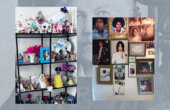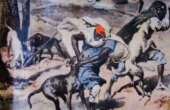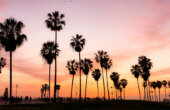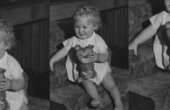The Horizon at Auschwitz-Birkenau
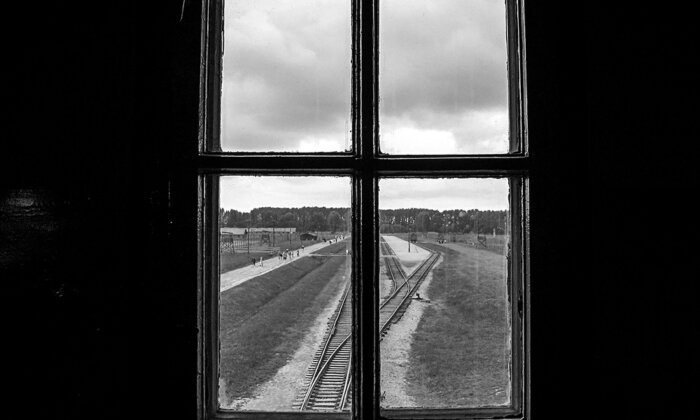
On a visit to Auschwitz-Birkenau, the renowned art historian and philosopher Georges Didi-Huberman tears three pieces of bark from birch trees on the edge of the site. Looking at these pieces after his return home, he sees them as letters, a flood, a path, time, memory, flesh. The bark serves as a springboard to Didi-Huberman’s meditations on his visit, recorded in the spare, poetic, and powerful book “Bark,” first published in its original French in 2011 and later translated into English by Samuel E. Martin.
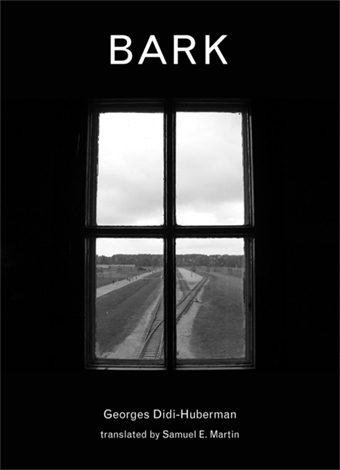
In the excerpt featured below, Didi-Huberman passes “through the doorway of what was once hell” where, propelled by a kind of urgency, he photographs “practically everything without looking.” The photographs are not meant to be art but approach it nonetheless.
In Didi-Huberman’s head-on reunion with history, he evokes, as art historian Geoffrey Batchen writes, “a dialogue between his images and texts that powerfully persuades us that ‘culture is not the cherry on the cake of history: It remains ever a place of conflict.'”
And so I went to Birkenau. Like so many others — the thousands of tourists, the thousands of pilgrims or the few hundred survivors, the latter sometimes mistaken for the former and vice versa — I “visit” this capital of the evil that man can do to man. What’s the sense in it? And why write it? Haven’t I long been persuaded that this would be impossible for me? And yet it’s so easy to take the plane to Warsaw, the train to Krakow, the bus to Auschwitz, and the shuttle to Birkenau. Although some eight hundred people named Huberman are listed on the death registry of the Shoah, I am not in the situation of “returning” to Auschwitz-Birkenau, as Paula Biren, a survivor of the camp, could legitimately say before Claude Lanzmann’s video camera: “I’ve often wanted to. But what would I see? How would I face up to that? […] How can I return to that, for a visit?”
And so I passed through the doorway of what was once hell, and what was so calm and quiet on that Sunday morning. I climbed the main watchtower. I photographed the window that looks out on the selection ramp. My friend Henri, who was accompanying me — and whose gentle insistence had induced me to undertake this trip — tells me he heard me say, “It’s inconceivable.” I said it, of course, I said it like everyone else. But if I must continue to write, to look, to frame, to photograph, to arrange my images, and to think all of this, it’s precisely in order to render such a phrase incomplete. One should say instead, “It’s inconceivable, so I must conceive of it in spite of everything.” To picture something of it, at least, the bare minimum of what we can know of it.
I looked, it was inconceivable, and at the same time so simple. When I came upon the selection ramp over there — with a sparse group of visitors on the path opposite — I distinctly felt the inconceivability of past reality (the tragedy of the selections) along with the inconceivability of a past viewpoint (the observation by the SS guard, from the same window, of the proper functioning of things). This inconceivability was the victims’ powerlessness to form a clear picture of the minutes that were to follow, which would consummate (consume) their fate. Or, indeed, the refusal of the SS guard to imagine the humanity of those men, women, and children whom he observed from on high and far off. But today, for me on this page, for anyone faced with a history book or on the territory of Auschwitz, it is necessary not to remain at this impasse of the imagination, the impasse that was precisely one of the great strategic forces — via the lies and brutality — of the Nazi extermination system.
The horizon is first of all those desolate patches of land — desolate today, back then teeming with a terrorized population — dominated by the watchtowers.
From that moment on, I photographed practically everything without looking. First, because a kind of urgency propelled me forward. Second, because I had no wish to transform this place into a series of well-framed landscapes. Finally, any precise framing was all but impossible, technically speaking, insofar as the gloomy light of midday, whose intensity, or at least whose leaden weight, was almost accentuated by the clouds in the sky, prevented me from checking anything on the small monitor screen of my digital camera.
But what is a horizon at Birkenau? What is a horizon in this place conceived to shatter all hope? The horizon is first of all those desolate patches of land — desolate today, back then teeming with a terrorized population — dominated by the watchtowers. Right over there, to be sure, is the crest line of the forest trees. One therefore has to try to project one’s gaze as far as possible, beyond the electrified enclosures of the camp, to where nature “reasserts its rights,” as they say in French, and where perhaps there still exist human rights, the negation of which this very place managed so efficiently. But the horizon here comprises first of all the horizontal lines of the barbed wire — twenty rows or thereabouts — which, standing tall as a man, imprisons sight wherever one is, just as it does life.
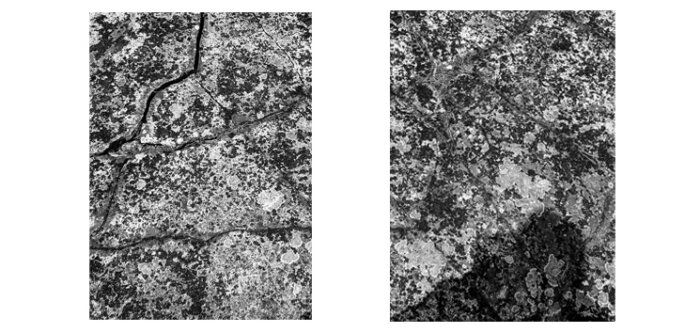
order to suppress the “evidence” of their criminal enterprise
to destroy the floors.
The whole space is crossed out, scored, gashed, struck through, mangled by the barbed wire. Bristling horizontal lines, put there not so that one can get one’s bearings, as in an optical apparatus with a grid view, but rather so that one give up altogether. It is thus a horizon beyond all orientation or disorientation. It is a lying horizon, where the opening out toward the distance collides with the implacable enclosure of the barbed wire. Unlike a prison — which, in theory, is a juridical space, whose enclosure takes the form of opaque walls — the Birkenau camp is all the more closed off in its negation of rights for its being visually “open” toward the exterior.
Today, now that nearly everything has been destroyed — notably the crematoriums, dynamited by the SS between the 20th and the 22nd of January 1945, just before the arrival of the first soldiers of the Red Army on the 27th — the horizon of Birkenau is more firmly situated between the wooden barracks still there, the bristling stakes of the enclosure, and the vestiges of all that has been demolished. This is why the ground assumes such importance for a visitor to this place. One has to look as an archaeologist looks: in this vegetation lies an immense human desolation; in these rectangular foundations and these heaps of bricks lies all the horror of the mass gassings; in this aberrant toponymy — “Kanada,” “Mexiko” — lies all the crazy logic of a rational organization of humanity conceived as a material, a residue to be transformed; in these tranquil marshy surfaces lie the ashes of countless people murdered.
I entered the barracks that were still intact (if one can put it that way). Spaces at once vast and confined. Now that there is no longer anyone there to suffer, to moan, to die, or to survive, one is still struck by something like the state preceding this human condition: by that I mean the method of construction, its simplicity, its cruel poverty, its stable-like logic. The brick and cement were below, for the floor, latrines, pipes, and chimneys. All the rest is in wood: nothing but beams and boards. The crude joinery of the bedsteads. The black walnut stain of the walls, typical of peasant construction in Poland. The closing system of the doors.

To photograph this is inevitably to produce images with appalling perspective: they are long buildings, where, for example, the rudimentary latrine holes appear in endless succession. One understands why the most evident cinematic form in a place like this was the tracking shot adopted by Alain Resnais in Night and Fog (distinct from the pans and long shots of Claude Lanzmann when, in Shoah, he filmed the “non-places” of the extermination sites where no construction remained). Moreover, the tracking shot requires a rail and thereby bears a resemblance to the railway mechanism itself, that mechanism essential to the “Final Solution” because — as Raul Hilberg has shown — it was a matter of managing the transport of the Jewish populations from all over Europe to this fatal “ramp” at Birkenau.
A human stable, of which I photograph only the door — which is like the unmoving shot, the “Halt! Who goes there?” of all perspectives; was this barracks, on the whole, anything other than one more gigantic cattle wagon? The last wagon, the wagon come to a stop, the space of an infernal life while awaiting worse to come?
Georges Didi-Huberman, a philosopher and art historian based in Paris, teaches at the École des Hautes Études en Sciences Sociales. Recipient of the 2015 Adorno Prize, he is the author of more than 50 books on the history and theory of images, including “Invention of Hysteria: Charcot and the Photographic Iconography of the Salpêtrière” and “Bark,” from which this article is excerpted.
“Bark” was named a winner of the 2018 French-American Foundation Translation Prize, and longlisted for the 2018 PEN Translation Prize.
